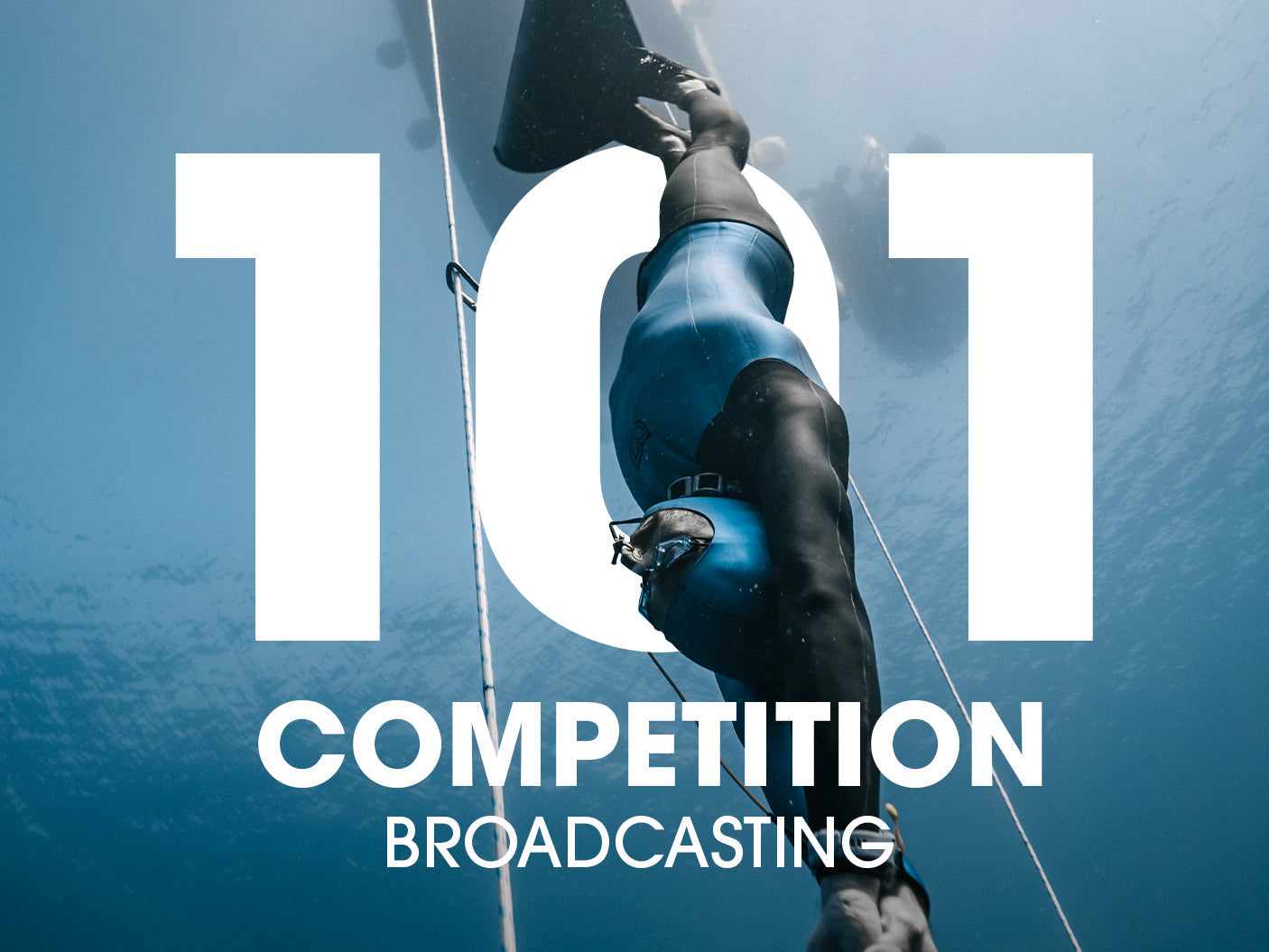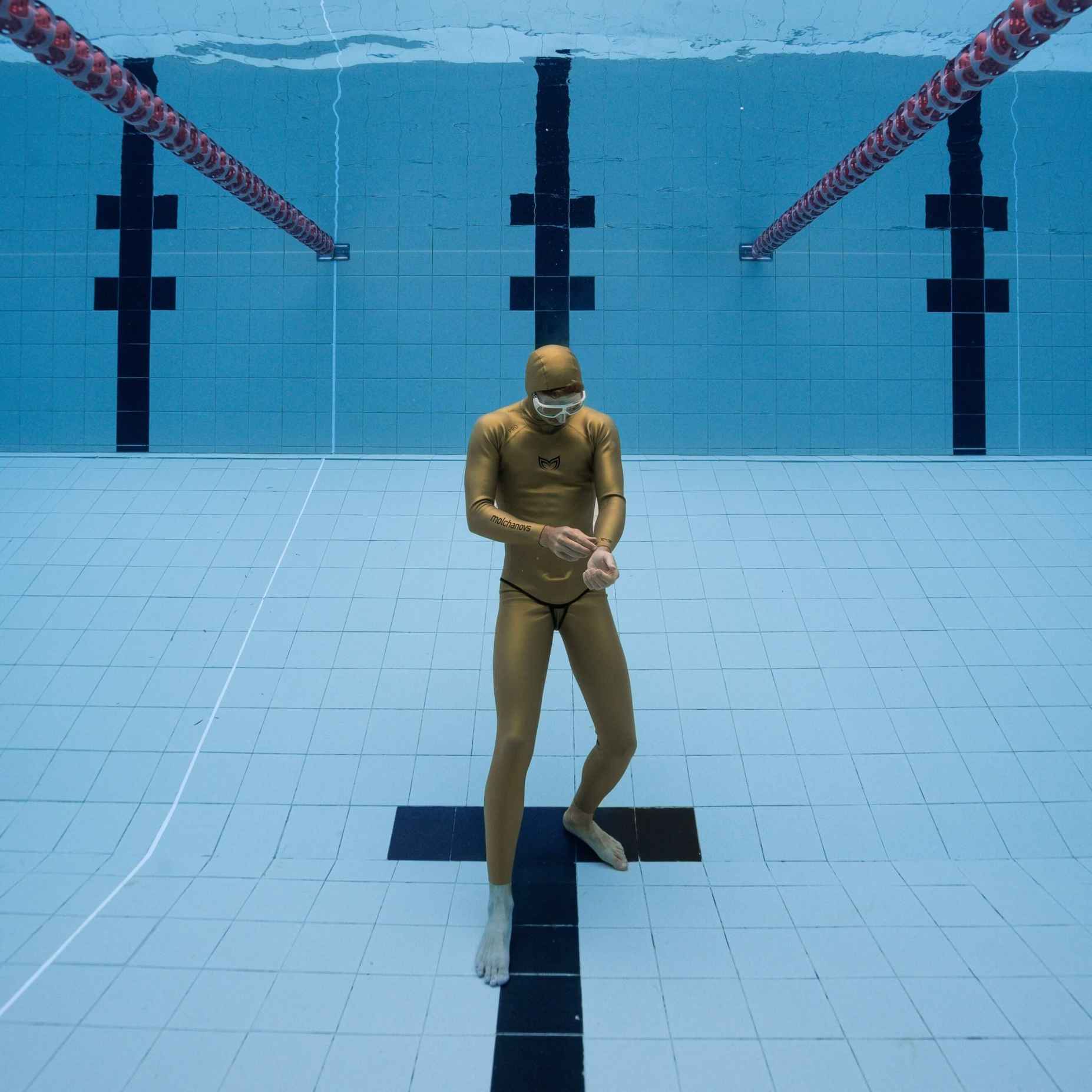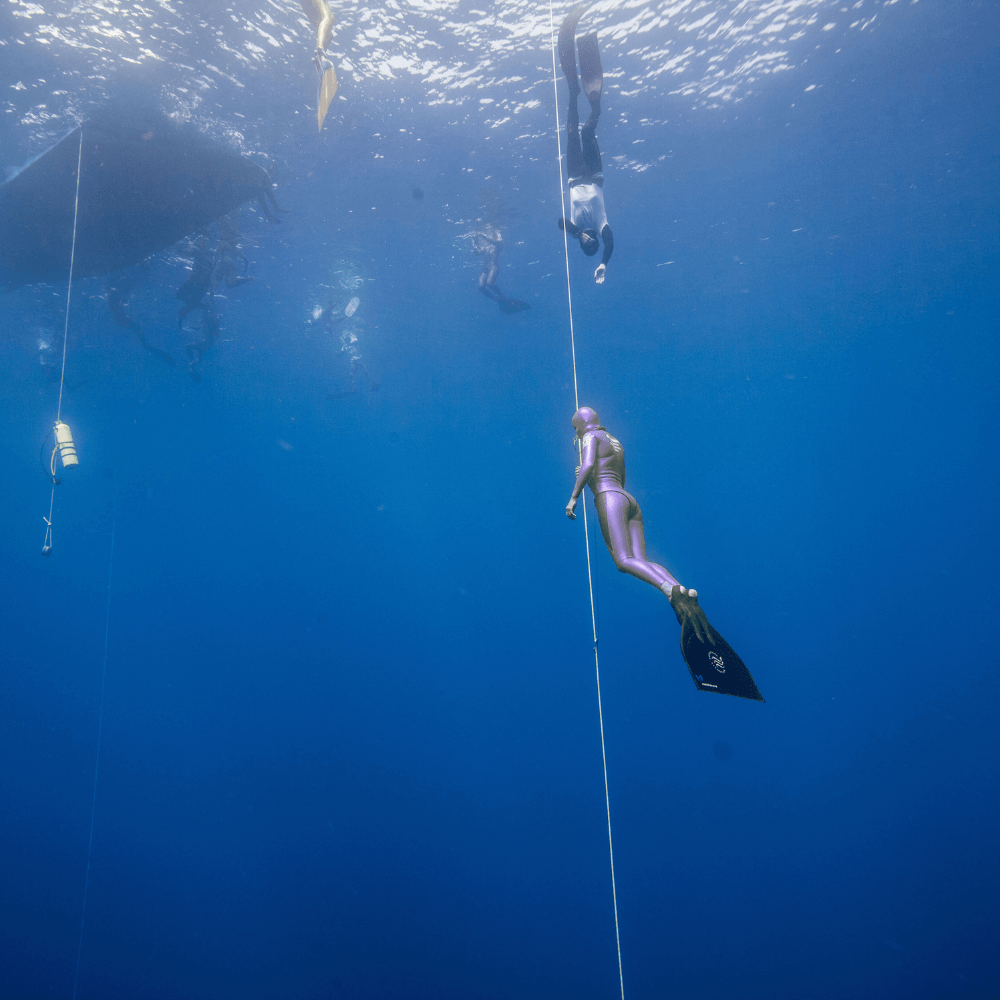How to Make Sense of a Freediving Competition Broadcast

By Kristina Zvaritch and Asya Kleschevnikova
By now, you’ve probably already read the first two out of three articles written to help freedivers understand freediving competitions: International Freediving Federations You Need to Know: CMAS vs. AIDA and Current CMAS and AIDA Freediving World Records. If not, be sure to check them out!
But today, we’re getting to the heart of the matter - how to watch and understand actual freediving competitions as they happen.
This article is meant to prepare you for watching broadcasts on Youtube and/or reading competition reports like the ones posted on the Molchanovs blog (see our 2021 competition reports). You’ll learn all about how to find upcoming competitions, read start lists, watch the performances, understand surface protocols and cards given to athletes, how protests are filed, and how to understand final results. Keep reading below!
How can I prepare for the broadcast?
Information about upcoming competitions
Start lists usually appear a day or two before the scheduled day of competition. This is because athletes need to announce to the judges their performances and cannot do so too far in advance.
To find a competition start list, you first need to find out if it is being held under CMAS or AIDA rules (many times it’s already written in the name of the competition). For AIDA competitions, you can find listed events on the AIDA Official Calendar page and view start lists there. CMAS competitions can be found on their event calendar. Sometimes, organizers additionally publish start lists on their social media (like AIDA Austria’s Instagram page).
World Championship events usually have their start lists posted on their social media: CMAS Freediving International Facebook page and AIDA International Facebook page.
Finding start lists can be tough sometimes, so if you are having a hard time finding a start list, follow our competition reporting page on molchanovs.com - we’ll keep you posted about the most important freediving events!
Reading a start list
When you look at the start list, it can be a bit confusing - but that’s why we’re here to help! Check out what’s on a start list below:
Diver and Gender - The athlete’s name and gender.
Official Top - The official starting time of the athlete’s performance.
Discipline - The discipline the athlete is participating in.
AP - Announced performance, or the expected time/distance/depth the athlete will make. Often it can be treated as a minimum since athletes are allowed to exceed it (except for depth competitions).
RP - Realized performance, or the actual performance an athlete achieved. This would be present on a start list after the performances have already concluded or the results list.
Card - White is for a successful dive, yellow signifies a penalty, and red means a disqualification.
Points - The number of points an athlete has earned from a dive (usually used to tally the overall winners at the end of a competition). Each discipline has a specific way of calculating points based on the athlete's performance.
Remarks - Special notes from the judges, such as a World Record (WR) attempt, National Record (NR) attempt, or Continental Record (CR - only in AIDA competitions) attempt.
Predicting winners
Predicting winners based on start lists isn’t an exact science, but very good guesses can be made based on an athlete’s previous competitive experiences, recent illnesses or injuries, etc. In our competition reports, we often predict the winners for fun (and are proud to say that we do get some correct!), so make sure to check out our competition reports as they get released and let us know if you agree with our predictions!
What will I see on the screen during the broadcast?
Start list
The start list continuously appears on the broadcast screen to highlight upcoming and past performances. You’ll see things like:
Athlete name - The athlete’s name
Athlete country and flag - The country abbreviated name and flag the athlete is performing under.
Discipline - The discipline the athlete will be performing in.
AP - The announced performance of the athlete.
RP - If the athlete has already dived, you will see their result. If they were supposed to dive and did not, you might see DNS, which stands for “Did not start.”
Card - If the athlete has already dived, you’ll see the card they received.
Notes - If an athlete has performed a World Record (WR), National Record (NR), or Continental Record (CR - only in AIDA competitions), you’ll see the corresponding abbreviations listed.
Athletes warming up
Between the start lists popping up on the screen, you’ll also see athletes preparing for their dives in the designated warm-up zone. In pool competitions, this is a separate lane or lanes where the athlete must be present for a certain amount of time before they enter the competition zone (they can also use these lanes for their warm-ups). Depth competitions have warm-up lines where athletes can perform preparation dives.
Athlete performances
Once an athlete gets on screen before their Official Top, you’ll see them relaxing and breathing at the surface, often with their coach nearby. You’ll also hear someone counting down the time until the Official Top (when they’ll have either 10 seconds to submerge their airways in the pool or 30 seconds to submerge their airways for depth). While some pool competitions have underwater cameras so you can watch the athlete’s performance in full, it’s not always the same case for depth competitions.
More significant competitions often use Diveye, an (expensive) underwater drone that follows athletes to depth, enabling you to watch their dives from the beginning until the very end. Diveye hasn’t been around long in the competitive freediving world (the first competition was the French National Championship 2018), but it has completely changed how freedivers watch depth competitions! You can see each arm stroke, kick, arm pull, and also every contraction, blackout, and safety divers following the athlete up or assisting them when they can no longer finish.
Surface protocol
Once the athlete makes it back to the surface, you’ll watch them perform the surface protocol. The surface protocol exists to “provide an objective test of the athlete’s level of hypoxia” according to AIDA competition rules. Simply put, the surface protocol exists so that dives remain controlled and athletes don’t arrive at the surface on the edge of an LMC or blackout. While surface protocols seem simple enough to judge, there’s actually a lot of room for interpretation, which is a contentious subject among athletes and judges.
You can see exactly what actions are involved in the surface protocol in International Freediving Federations You Need to Know: CMAS vs. AIDA.
Cards
Speaking of surface protocol, athletes get a red card if they perform it incorrectly or don’t complete it within the allowed timeframe. A red card signifies disqualification, and it can be given for a lot of reasons:
- Blackout
- Airways dipping before the surface protocol is complete
- Pulling on the line outside of the turning zone in every depth discipline but FIM
- Starting a dive more than 30 seconds after Official Top has begun
- Dolphin kicks in DYNB/CWTB in an AIDA competition
- If a coach or safety diver touches an athlete during their dive (called a “supportive touch,” which is often why you’ll see safety divers holding their hands above the water as soon as an athlete has reached the surface)
- And more!
An athlete receiving a yellow card means that while the performance was satisfactory, they incurred a penalty or multiple penalties. Penalties can include:
- Grabbing the line outside of the turning zone in every depth discipline but FIM
- Turning early at depth
- Failure to grab a tag at depth
- Starting a dive before Official Top has begun
- Dolphin kicks in DYN-BF/CWT-BF in a CMAS competition
- If an athlete’s RP is less than the AP
- And more!
White cards mean a clean dive where the athlete reached the time, distance, or depth as planned (or greater in STA and DYN disciplines), performed surface protocol correctly, and did not incur any penalties. However, if a dive is reviewed and the athlete is found to have violated the rules (e.g., a grab and pull slightly outside of the turning zone in CWTB), the white card can quickly turn red. Athletes can even protest the judge’s decisions, which is discussed further below.
When and where can I find the final results?
Official results publication
There are at least two rounds of preliminary results. The ones you see on that appear on-screen directly after the athletes dive are part of the first round. The second round of preliminary results appear after judges watch videos of the dives (after the last athlete finished their performance). Once these results are published, athletes have 30 minutes to file protests (see the next section).
Usually, official results are published the same day after all of the protests are complete. In some cases, they may be posted the day after for a few reasons:
- A lot of competitors, which means the last dive ends late
- Judges need to review the official videos at the end
- Protests can get complicated and need extra time
- Depth competition dives may be delayed or postponed due to weather conditions (in this case, sometimes results for certain disciplines come only at the end of the event).
Results are published in the same place start lists are published (see “Information about upcoming competions” above). At the same time, notable performances are mentioned in our competition reports on molchanovs.com.
Protests
Athletes can file protests within a certain amount of time after the preliminary results are published.
The basic steps for filing a protest in an AIDA competition go in this order, but can often get more complicated and include more stipulations if multiple protests occur:
- When someone begins a protest, the jury (judges) gather in a room and can deliberate for a maximum of one hour.
- The jury watches either the official video or an accepted video that shows the dive clearly. They sometimes watch the video multiple times and in slow motion.
- The judges who gave the original card summarize the facts of the dive and why they assigned that particular card.
- The athlete and one other person enter the room and watch the video, give their comments, and leave.
- The jury discusses the protest and submits their votes via secret ballots.
- If there is any doubt about a verdict, the benefit of the doubt is given to the athlete whose performance was protested.
Protests aren’t cheap - an athlete must pay 50EUR to make a protest. If their protest is successful, they will be reimbursed the 50EUR - if not, the sum will be given to the organizer of the competition.
How to understand final results
The final results read similar to start lists, as mentioned in “Reading a start list.” However, the “Notes” section on a final result list can include whether the performance was a national or world record, penalties, reason/s for disqualification, whether the athlete experienced a blackout, a “DNS” showing that the athlete did not start, and more.
While start lists display athletes’ names in the order of Official Top, results lists will typically be ordered by the top performances with white cards first and end with red card performances.
If you look at overall results, you will see that athletes have a point total for each discipline they competed in, along with a complete count of their points. Overall winners are determined by who has the most accumulated points at the end of a competition. Males and females are judged separately.
To give an example using AIDA, points are assigned according to the following:
Static (STA) - 1 second of immersion = 0.2 points
Dynamic disciplines (DYN, DYNB, DNF) - 1 meter of distance - 0.5 points
Depth disciplines (CWT, CWTB, CNF, FIM) - 1 meter of depth = 1 point
Some athletes aim for overall points so that they can win a monetary prize, and they do so by competing in all disciplines. Other athletes focus on one discipline to try and achieve a record in it. The more you watch freediving competitions, the more you’ll recognize these athletes, especially the ones aiming for world records.
Conclusion
That’s it - you should now be more than ready to watch freediving broadcasts with confidence and explain to your friends what’s going on when you watch together!
Remember that if you are having trouble finding information online about freediving competitions - you’re not alone! Not every freediving event is run or recorded the same way, so often if you cannot find something about a certain competition online, it may just not exist. This is why we began competition reporting in the first place - to keep track of important events in freediving and to give the non-freediving public a chance to get inspired by the sport!
Don’t forget to check out our previous articles all about competitions - International Freediving Federations You Need to Know: CMAS vs. AIDA and Current CMAS and AIDA Freediving World Records - if you haven’t yet already!




Leave a comment